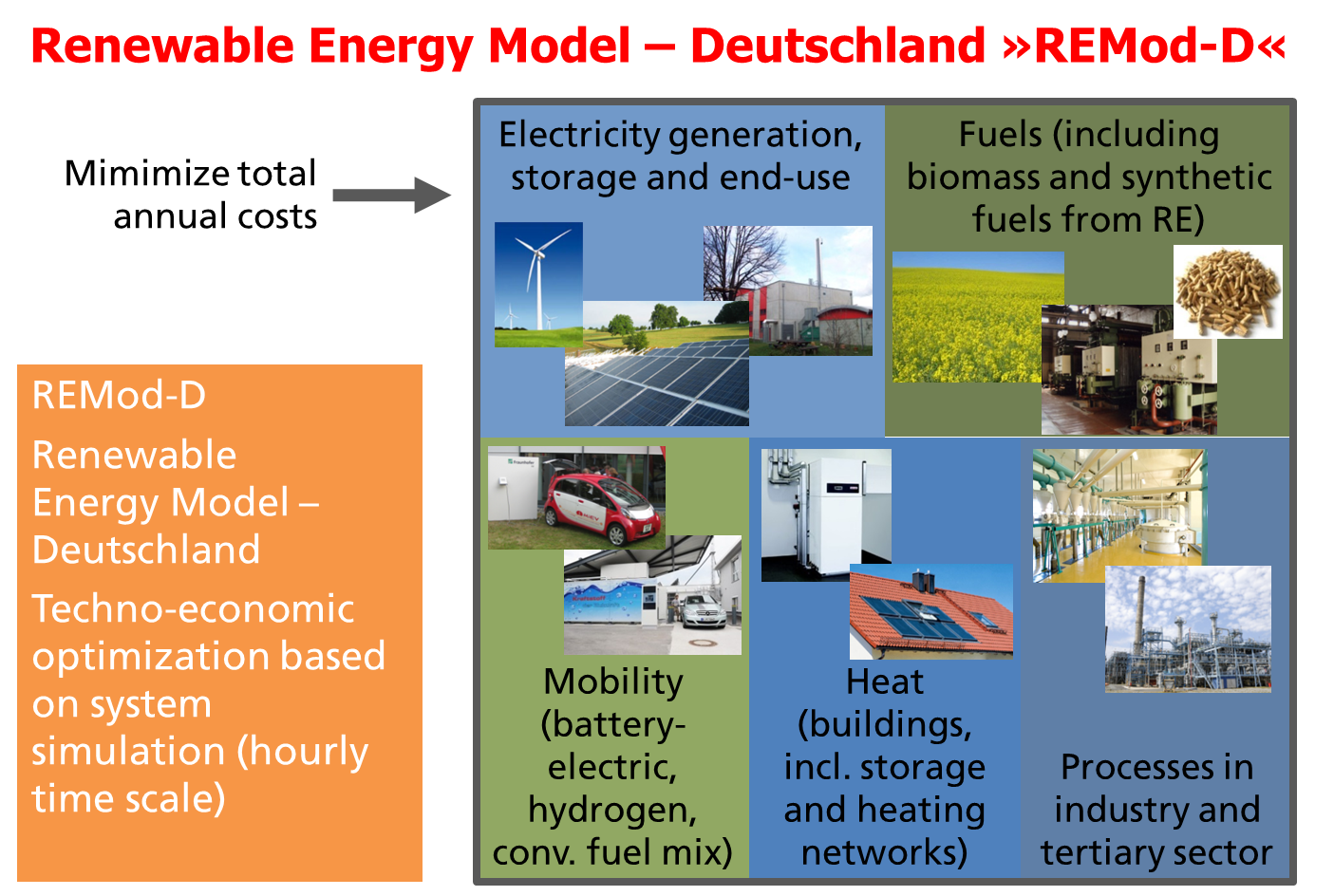| Duration: | October 2016 - November 2019 |
| Contracting Authority/ Sponsors: | Federal Ministry of Education and Research (BmBF) |
| Project Partners: | 80 projec partners (see project website) |
| Website: | www.kopernikus-projekte.de/projekte/systemintegration |
| Project Focus: |
Kopernikus-Project ENavi – System Integration
Kopernikus projects for the Energy Trasition – Topic 4: System Integration
With the energy transition, Germany has set itself the goal of transforming the current energy system into a largely CO2-free system based on renewable energy sources. An economic, environmentally friendly, reliable, and socially compatible energy system requires an integrated perspective at the system level. That is why ENavi views the energy transition as a transformation process for society as whole, and links scientific analyses with socio-political demands.
The aims of the ENavi project are to
- gain a deeper understanding of the complex and interacting energy system and connected sectors such as industry and consumption,
- identify courses of action for the systemic integration of the future energy system’s components under consideration of energy policy goals and constraints (including the regulatory framework),
- estimate as precisely as possible what consequences a certain step would have on the energy system in the short, medium, and long term, and finally
- generate options for effective measures through trans-disciplinary discourse.
The Fraunhofer Institute for Solar Energy Systems ISE is working on various aspects of the system integration within the ENavi framework.
Increasing sector integration within the energy system – meaning an increasing integration of the electricity and heat, electricity and transportation, and electricity and industry processes sectors – has two main reasons that mutually complement each other: (1) Decarbonization of the heat, transportation, and industry processes sectors implies an increasing use of electricity generated with falling CO2 emissions and/or the use of fuels with a rising proportion of renewable energy sources (biogenic, synthetic-chemical energy sources produced with renewable electricity). (2) The increase in volatile electricity generation (solar, wind) and heat supply (solar, cogeneration) requires increasing adaptation of electricity and heat consumption to generation. This essential transition to a flexible energy system is only possible over the medium and long term if, in addition to the applications already dominated by the final energy of electricity today, many new applications in other sectors use electricity, including the option of producing synthetic-chemical energy sources, and if greater networking of supply and demand in the heat market is accomplished. The second reason in particular places high requirements on the future use of energy in the heat, transportation, and industry processes sectors.
Fraunhofer ISE is involved in ENavi with various work packages. Integrating flexible energy use in buildings (heating, cooling), transportation, and industry processes is being extensively explored in the work package for sector integration. This implies a detailed analysis from the technical potential – where can flexibility be achieved with what effort – to the necessary economic incentive systems and their regulatory implementation, to the question whether and how the respective affected stakeholders can and have to be involved. Fraunhofer ISE uses the REMod-D energy system model here to answer the questions.
The “User Behavior and Field Tests” team at Fraunhofer ISE in the “Transformation of Values and Lifestyles” work package is also working on the subjective perception of the energy transition at the local and regional levels. Understanding the behavior of social systems¹ (here: the “social system of the chosen region”) under conditions of the energy system transformation is the objective. Drivers, obstacles, and divides as well as the social dynamics of concrete projects are analyzed in the “Regional Acceptance and Regional Divides” task. Qualitative interviews are being conducted in various model regions and living labs for this purpose, and relevant process conditions and design options are identified based on the results. These are being transferred to the modeling of social systems in the medium term.
The “Smart Grid IKT” group in the “Digitalization and IKT” work package is investigating new possibilities for decentralized trading and the integration of decentralized plants into the energy system. Here the focus is on multi-agent systems and the opportunities for blockchain-based concepts. This is taking place in close coordination with other work packages in order to do justice to the mutual exchange of requirements with the IT system and the new possibilities of digitalization.
Based on the example of two ENavi living labs, the “Smart Cities” group is investigating what planning methods and tools are used in the transformation of municipal energy systems. Optimized energy system solutions are being calculated with the KomMod model and compared to existing planning and the results of other methods. The researchers are developing proposals for the optimized and goal-oriented development of transformation paths on this basis.
¹Stern et al. (1992) compare environmental systems (atmosphere, biosphere, hydrosphere, etc.) and human systems (economical, political, cultural, and socio-technical systems) for the analysis of global change. When social systems or “the social system of the model region” are mentioned in the following, this more heuristic understanding of human systems as a “social sphere” is meant, not the narrower sociological construct as defined for example by Parsons (1997).
